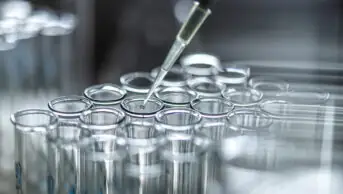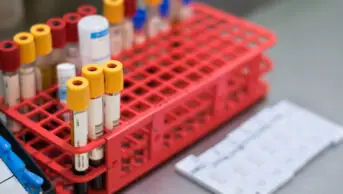The new year has brought me a perplexing and highly unwanted affliction. Despite the absence of a causal explanation, I feel a sense of guilt for what has come about.
I can only imagine then what it must feel like to receive a different diagnosis in later life, such as diabetes, which is much publicly debated and related causally to health behaviours, weaving a narrative of blame and culpability on the part of the patient. Diabetes is my focus this month and I look at three phytochemical papers and one paper examining statins, all published in the Journal of Pharmacy and Pharmacology.
A promising treatment for diabetes
The first paper examines the bioactive compounds of the genus Polygonum L. and their possible uses in medicine, including in diabetes. In this review paper, the authors set out to compile all data from pre-clinical and clinical studies, including, more recently, in silico investigations relating to coronavirus disease. The paper itself is organised to consider several of the compounds of Polygonum L. identified as therapeutically important, including the polyphenolic flavonoid compound, quercetin (3,3’,4’,5,7-pentahydroxy-2-phenylchromen-4-one), the anthraquinones, emodin (1,3,8-trihydroxy-6-methylanthraquinone) and rhein (4,5-dihydroxy-9,10-dioxoanthracene-2-carboxylic acid), and the stilbenes, trans-2,3,5,4’-tetrahydroxystilbene 2-O-β-glucopyranoside, resveratrol (3,4,5-trihydroxy-trans-stilbene) and polydatin (3,4’,5-trihydroxystilbene-3-β-D-glucoside).
As always, the problems are that while such compounds might show promise in early experiments, this rarely translates to significant clinical effects, or the clinical studies are simply absent at present. For example, while in vivo animal studies using rhein have shown significantly reduced fasting glucose levels and improved glucose tolerance in mice, and its oral administration in humans is reported to result in several benefits, including improved insulin resistance, the authors provide no further evidence from clinical trials.
On resveratrol and diabetes, the authors signpost to a 2017 paper published in npj precision oncology, another review examining existing clinical trials, which suggests resveratrol shows promise for diabetes. As ever, we await further research.

The plant, Dalbergia sissoo Roxb. ex DC., a tree of the genus Dalbergia L.f. is the subject of another review paper published this month that also happens to include an assessment of the plant’s anti-diabetic effects, among other pharmacological potential.
The paper cites several studies using aqueous or ethanolic extracts of the leaves and bark of this tree that report hypoglycaemic effects in rats. Taken at face value, the findings again signal an area that warrants further investigation.
The final phytochemical paper that caught my attention examines the potential for extracts of Ginkgo biloba L. to protect human retinal Müller glial cells from oxidative damage which, as the authors explain, occurs in diabetic retinopathy. Damaged blood vessels inside the retina can lead to blurred vision and, potentially, sight loss, making this an important target for therapeutic intervention. The authors investigate Ginkgo biloba extract (GBE) for its cytoprotective properties, using cell culture and specifically MIO-M1 cells, which are Müller glial cell lines derived from adult human retina. Using tert-butyl-hydroperoxide to induce oxidative stress, the authors illustrate a concentration-dependent cytoprotective effect of GBE, leading to a decrease in the loss of lactate dehydrogenase from cells, preserving cell membrane integrity. While tert-butyl-hydroperoxide is shown to markedly increase the cellular production of reactive oxygen species, GBE significantly mitigates this effect.
Additionally, GBE pre-treatment of the cell lines protects against a decrease in mitochondrial membrane potential. Various other experiments are also detailed to suggest the activation of cell signalling pathways as potential explanation of the mechanism of effect. Where this leaves us, of course, is again somewhere on the continuum of research, waiting for others to pick up a potentially fruitful line of investigation so that patients might benefit from this work in the future.
The benefits of statins
The final paper I would like to highlight focuses not on phytochemicals but on statins and their effect on diabetic and non-diabetic peripheral neuropathy. This is another review paper, including 4 in vitro, 24 in vivo, 38 clinical and 36 review studies. In rat models simulating diabetic-induced neuropathy, the authors collate a range of papers all showing protective effects of the various statins used. Most of the in vitro cell studies also suggest protective properties for diabetic neuropathy and the clinical studies suggest a beneficial effect of statins on development of diabetic peripheral neuropathy.
However, perhaps because of heterogeneity found in the studies, the results are reported individually and descriptively, rather than using formal statistical analyses. The included reviews do, however, provide some meta-analytical data, but most of this focuses on peripheral neuropathy per se and shows either a lack of protective effect or, worse, a positive association between statin treatment and the development of peripheral neuropathy. This suggests statins could be a causative rather than protective agent, certainly in non-diabetic patients.
Therefore, as the authors note, far from providing clarity, the paper works to highlight controversy about whether statin use induces or ameliorates neuropathy. However, the authors certainly conclude that, in diabetes, statins provide beneficial effects in relation to neuropathy.
In the meantime, I grapple with my ills and, instead of searching for an aetiology, I remain hopeful that, in time, science will help those in my situation, if not myself.
Parastou Donyai is chief scientist at the Royal Pharmaceutical Society


